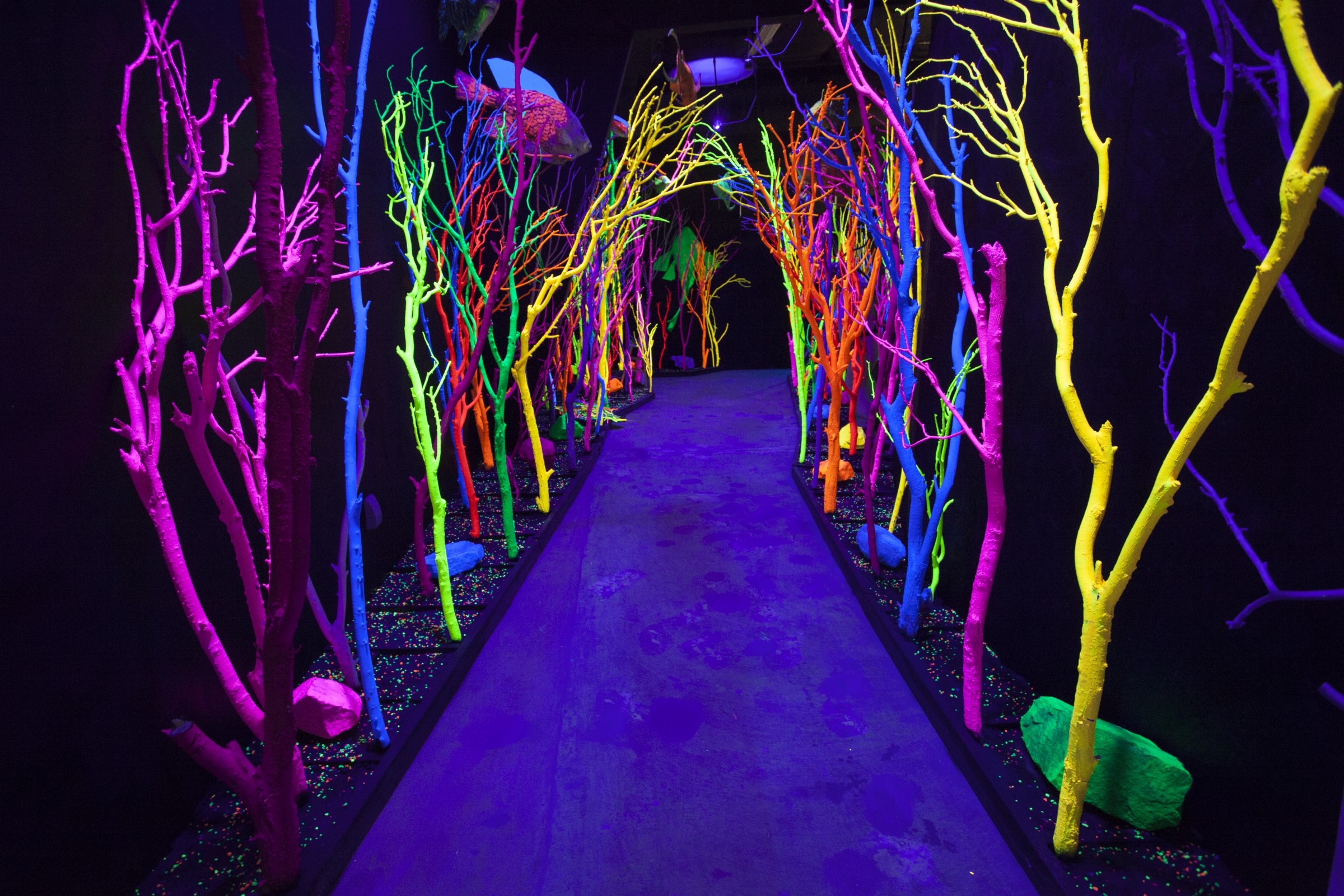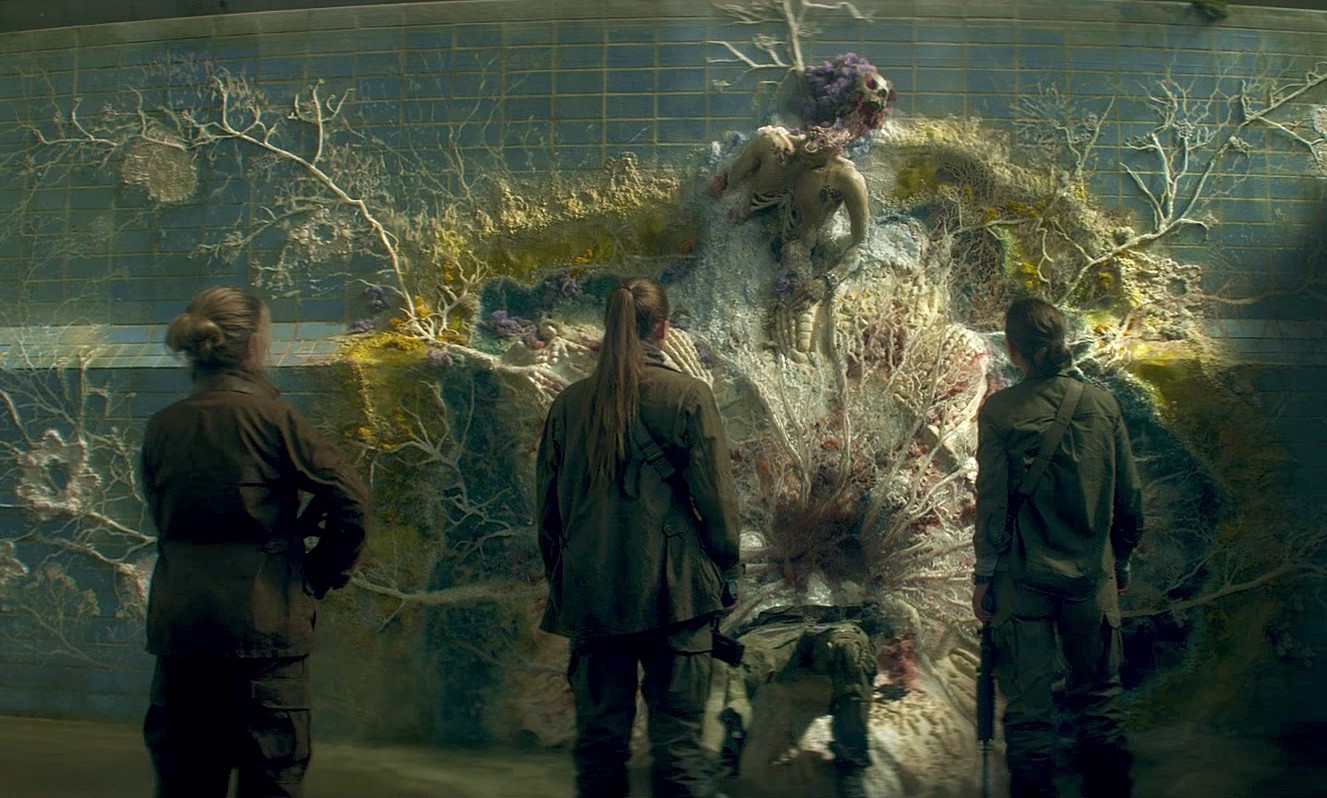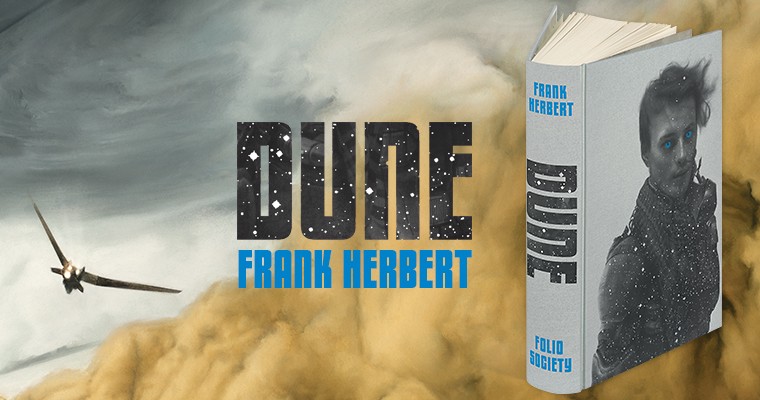interviews
How to Write a 20,000-Square-Foot Book
Meow Wolf’s House of Eternal Return is a massive art installation that’s also a sprawling sci-fi story

The best book I read this year used to be a bowling alley.
New Mexico art collective Meow Wolf specializes in art you can walk around in; it’s built an interdimensional boat, a tiny coral reef, and a surreal grocery store. But the group’s first permanent installation, the House of Eternal Return, isn’t just a magical landscape. It’s also a huge, immersive science fiction story the size of a building. (Specifically, the size of an abandoned bowling alley, although once inside the only hint of the space’s provenance is a bowling ball embedded in one of the walls.)
You don’t exactly read it, of course—or rather, you don’t read all of it. Dotted around the two-level, 20,000-square-foot space are diaries, blogs, experiment logs, day planners, newspapers, magazines, pamphlets, and notes you can sit down and page through. But there are also treehouses, arcade games, a laser harp, a giant musical light-up mastodon skeleton, and a washing machine you can slide through into a sparkling laundry hole. These, too, are part of the story.
True to its massive scale, the House of Eternal Return is not the work of a single author; an eight-person narrative team was responsible for building the story and creating the textual elements. (Even Meow Wolf’s landlord dabbles in writing—the art complex is owned by George R.R. Martin.) I talked to Billiam Rodgers, a member of the narrative team, about the particular challenges and joys of writing a building-sized nonlinear book that has to be experienced to be read.
Jess Zimmerman: How would you describe, in a few sentences, the story of the House of Eternal Return?
Billiam Rodgers: The Seligs, a family gifted with supernatural powers of creation, warp time and space while trying to rescue their son from a pocket dimension. As their universe collapses into chaos, the Seligs’ memories, secrets, and desires manifest outside of the house. An Illuminati-esque organization known as the Charter freezes the house in time and moves it to New Mexico for safekeeping. Guests are visiting a sci-fi version of Yucca Mountain. God help us if the Charter’s quarantine fails.

JZ: What’s the order of operations for writing a story that is also a building-sized collaborative art project? Did you and your team have a hand in directing the design and building of the space, or were you presented with a more or less fully-formed art concept that you then developed a backstory for? Or did the art and narrative elements inform each other?
BR: The centerpiece of the exhibition is the Seligs’ home and I believe that idea predates everything else, even the story. After the main creative team agreed on that image, Vince Kadlubek brought together a group of local writers and gave us a prompt: Something happened inside the house that broke time and space, creating our exhibition. What was it?
The challenge for the collective was to let individual members of Meow Wolf build their own creative visions, but to do that in such a way that the whole work is seamless. The exhibition needs to look like it is suspended in a bubble. The story prompt helps unity because we’re all starting from the same space. It helps individual creators because it’s broad enough to go wherever an artist wants to take it. It’s a container. Narrative is important because it brings everything under the same umbrella. Even if a room doesn’t have a word of text inside it, your experience of that room is still colored by the story.
Even if a room doesn’t have a word of text inside it, your experience of that room is still colored by the story.
So in that way art and narrative work together. For example, I wrote the character of Lucius and became obsessed with Emily Montoya and Benji Geary’s idea for Portals Bermuda, a Sandals-style resort that shuttles tourists off to different dimensions. Lucius is the leader of a self-help cult and the idea of this bougie new age Waco floating in outer space was too strange for me to ignore. I never would have reached that spot on my own. That character’s whole arc is based on us riffing off one another.
Narrative also supports the theme of being in a suspended reality. We don’t have suited docents who guests would quickly learn to ignore; we have Charter agents in lab coats. They serve the same function but they support the story. When a guest learns their significance it’s an “aha!” moment.
When art and narrative work together within a large container idea, everything a guest sees is text. You can walk through the exhibit without reading a word and you’ll still see our themes everywhere you look.
One of our narrative team members, Chadney Everett, was heavily involved in the set design in the house. Chadney and everyone who helped him did wonders for the story. The home is so moody and mysterious. It’s my favorite text in the exhibition.

JZ: For the most part, you have no way of controlling in what order people will read the different parts of the story. How much did that figure in to the way you constructed the narrative? Did you attempt to predict or even guide people’s attention so the story would unfold in a specific way? (One element seemed to me like a clear attempt to influence reading order: there’s an experiment notebook that’s locked inside a safe whose code is written elsewhere.) Or was the challenge to construct a narrative that is equally intriguing no matter where you start, and deepens in an equally satisfying way no matter which direction you move from there?
BR: This was a tough issue to address. There aren’t many things to look to for models. Most other forms of storytelling aren’t comfortable with the audience exercising their ability to wander away from the narrative. Even videogames, which I used to inform my writing, often demand to be experienced linearly. If you go off the critical path you’ll have a character in your ear every 20 seconds reminding you of the objective.
We didn’t want to build a dark ride at Disneyland, we wanted people to feel like they were exploring another world, a place that feels lived in and persists with or without them.
When art and narrative work together within a large container idea, everything a guest sees is text.
So linearity doesn’t work well. But I think embracing chaos and being comfortable with people wandering off actually helped us in the long run. When you write a story it can feel like you’re gambling against the reader’s attention span. You’re fighting inertia if you lay everything out in front of them.
But if you take that story, abstract it across a three-dimensional space and offer only minimal guidance? The audience will tear the place apart looking for the next journal, the next video, the next secret code. We didn’t get as game-y with the story as we could have, but there are still game-like loops that reward exploration. What the hell is up with the clocks? What’s in the safe? What’s that strange pyramid shape all about? You’ll eventually discover those secrets for yourself and they pay off by making the world appear larger than it did five minutes ago.
I tried to make a critical path through the story after we opened, but I abandoned it. Instead, the story elements support one another by offering different viewpoints of a few key events. If you miss the experiment notebook in the safe, you’ll get similar ideas in the kids’ room down the hall. That feels real to me. It respects the guests’ agencies and makes the space feel lived in.

JZ: Does the team do any research, formal or informal, on how people interact with the House and its story — what order they tend to go in, how long they spend reading or watching things? Have you made any surprising observations?
BR: Most of my assumptions about audience engagement were wrong. At the earliest meeting of the narrative team we discussed the story as something that would appeal to adults, because why would a kid care about a story when there are all of these tree houses? Instead kids are — by far! — the best at piecing everything together. Kids occasionally send mail to the family and it’s eerie how much they know about the Seligs.
Why is that? I believe that younger people are closer to this kind of storytelling. A kid who builds her own world in Minecraft is going to be better at this than I would have been at that age, when I was watching four hours of cartoons a day. They also have the benefit of growing up with the internet, which is unrefined semantic goo and is perfect for experimental storytelling.
I also noticed that some people feel insecure about their own powers of deduction. Whenever someone mentions that they’re not sure if they solved the story, I ask them what they think happened. Most of the time the person does understand, they just doubt themselves. I think we have a very open-ended narrative experience. We don’t have a special room where you are hit with a white light and all the answers are revealed. I think some people could be helped by that kind of definitive validation and I hope we get to explore it soon.
We don’t have a special room where you are hit with a white light and all the answers are revealed.
JZ: Early this year the exhibit shut down for a little while to refurbish and build new stuff, including new narrative objects. Did creating new texts change or deepen your understanding of the story of the House as a whole? Are you done expanding for now, or is the story likely to keep undergoing refinements?
BR: Those new texts were very important for me to finish. I celebrated after installing them and nearly did backflips out of the exhibition that night.
You’d think the hardest part for us would be getting to opening night, but the months after the doors opened were difficult for me. Suddenly writing I felt comfortable with in the abstract was being scrutinized by hundreds of people a day and I think that broke my brain a little. I was hyper-aware of where the story could be more complete and I obsessed over how people engaged with it.
To put that anxiety to bed I met with some of the other writers and worked out plans to build out the characters. We had the benefit of hindsight so I was able to have these texts respond to specific strengths or weaknesses in the older texts. Lex’s experiment notebook with Thea Milinaire’s kickass hamster illustrations is one of my favorite things in the exhibition in part because it reveals so much in just a few minutes of reading. I also got to see how characters responded to the central theme of the story: the necessity of balance between order and chaos. With Lucius that theme leads to a very tragic place, but Nicolae moves to a place of strength and he gets to experience something grand before the curtain closes on his family.
It’s hard for me to say how the story could be refined in the future, but we’re always working on ways to get strange with narrative. We did a lot of universe building for this project and the writing team loves riffing on it. Our Halloween and anniversary performances were both connected to the central story.

JZ: Some percentage of the people who come to the House are never going to read any of the text. The first time I went there were a lot of kids, who clearly saw it as the world’s greatest playground, which it is. The second time, a Friday night, there were a lot of teenage couples who saw it as the world’s greatest collection of makeout nooks (also legitimate). Do you feel like they’re missing some essential part of the experience, or even missing the point? Or is the story just one of a number of equally valid ways into the work?
BR: The House is an immersive work and however it gets you to buy-in is valid. There are many elements, but they’re all feeding into a constructed reality. So if the narrative grabs you: that’s great! It’s done its job. If the Laser Harp or Treenado serve as your entry into the world, then that’s also great. The point is to lose yourself and explore.
Storytelling in this space is awesome because it’s another way to be maximalist. The coolest scenario I can imagine is someone running through the secret passages as a kid and not engaging with the story until they’re older. Once that happens, this space that was once so familiar will become new again. They’ll see text everywhere they look. They’ll notice hidden messages in the wallpaper and the clocks and the newspapers. They’ll find clues in places where there are none. It will be the mother of all payoffs.
The coolest scenario I can imagine is someone running through the secret passages as a kid and not engaging with the story until they’re older.
JZ: A small number of the textual elements from the House are accessible from outside it; there’s the blog and another website that can be accessed from anywhere, and the gift shop sells copies of the newspaper found on the kitchen table. But other parts — a diary, the experiment notebook, a day planner — are only found inside the House. Of course I selfishly wanted to be able to pore over them on my own time. But do you feel like the written parts of the story make sense outside the context of the House? Does taking them out of their ecosystem diminish them? I guess what this question boils down to is: where, to you, does the narrative live? Is it in the books and notes and papers scattered around the House, or is it only in the House as a whole?
BR: Atmosphere matters. There are features to the narrative experience that would be lost without the context of the House. People who hunt for the story are being transgressive; they’re digging through a stranger’s mailbox and sock drawer. The House feels like the family left five minutes ago and you wonder if they’ll come back and catch you snooping around. You’re surrounded by these aloof authority figures in lab coats. They’re watching you. These features take a familiar kind of environment and make it exceedingly strange.
This is text too, but it’s not written. There’s a loop between the environment and the words that benefits both.

That said: I like the idea of fiction invading reality and the other writers do, too. We have characters that can live outside of the exhibition. They insist that they’re real.
JZ: If someone is going to visit the House, what’s one important thing you’d like them to know about the story? (Where to start, what not to miss, secrets or Easter eggs, or just your favorite part.)
BR: Sound is the key to the Multiverse.
JZ: For people who can’t visit but who are intrigued by the project, is there a book or film or other narrative experience you’d recommend?
BR: When I started working for Meow Wolf I was obsessed with the story in Dark Souls. Like everything else in that game, the story is indifferent to the player. The world persists with or without your interest. If you read every item description in the game, fine; if you breeze past all of it on your way to fight a gang of skeletons, fine.
I love that about Dark Souls. I love that it doesn’t lecture me with cut scenes and I love that everything benefits the minute I start taking an interest in the world. I can see how the architecture, the character dialogue and even the enemy placement reinforce the theme of a world that is succumbing to entropy.
That approach appeals to me because I feel like the world it creates doesn’t exist for my benefit. It’s larger than me. It’s my role to take these scraps of evidence and stitch them together into something I can use. If you do that, the choice you make when you beat the game will feel weighted with so much significance you won’t notice that the ending is less than a minute long.
The House of Eternal Return is located in Santa Fe, New Mexico and is open Sunday, Monday, Wednesday, and Thursday 10 a.m. to 8 p.m. and Friday and Saturday 10 a.m. to 10 p.m. Your $20 admission gets you in for a full day, even if you leave and come back, which you’re going to want to do.






